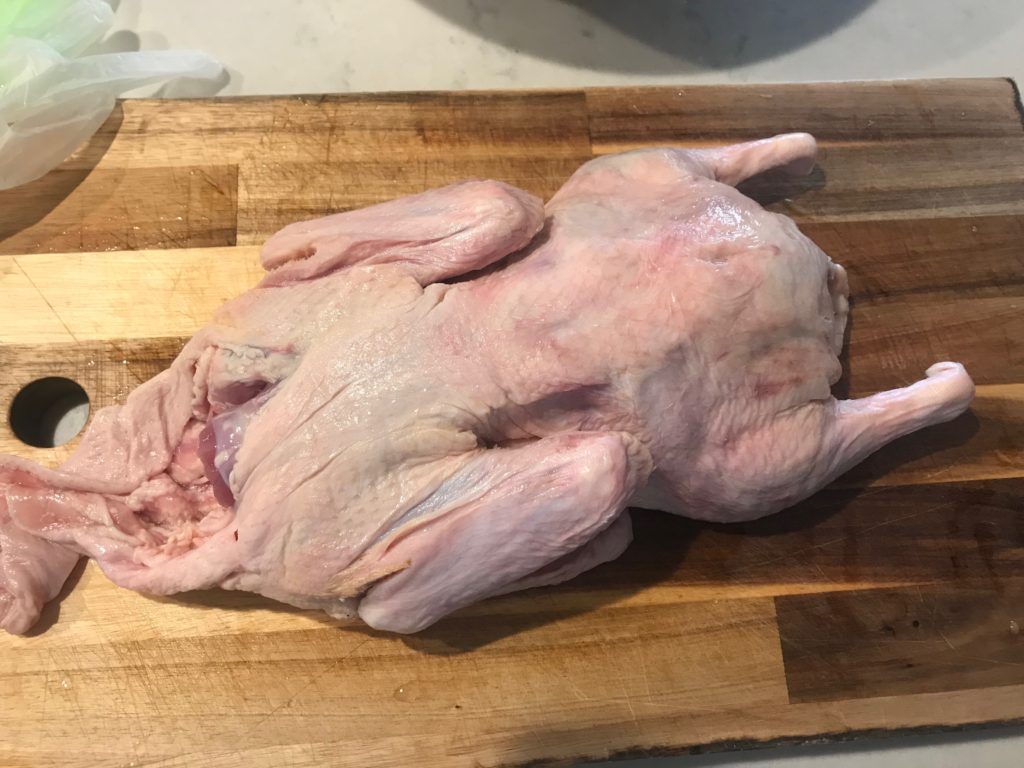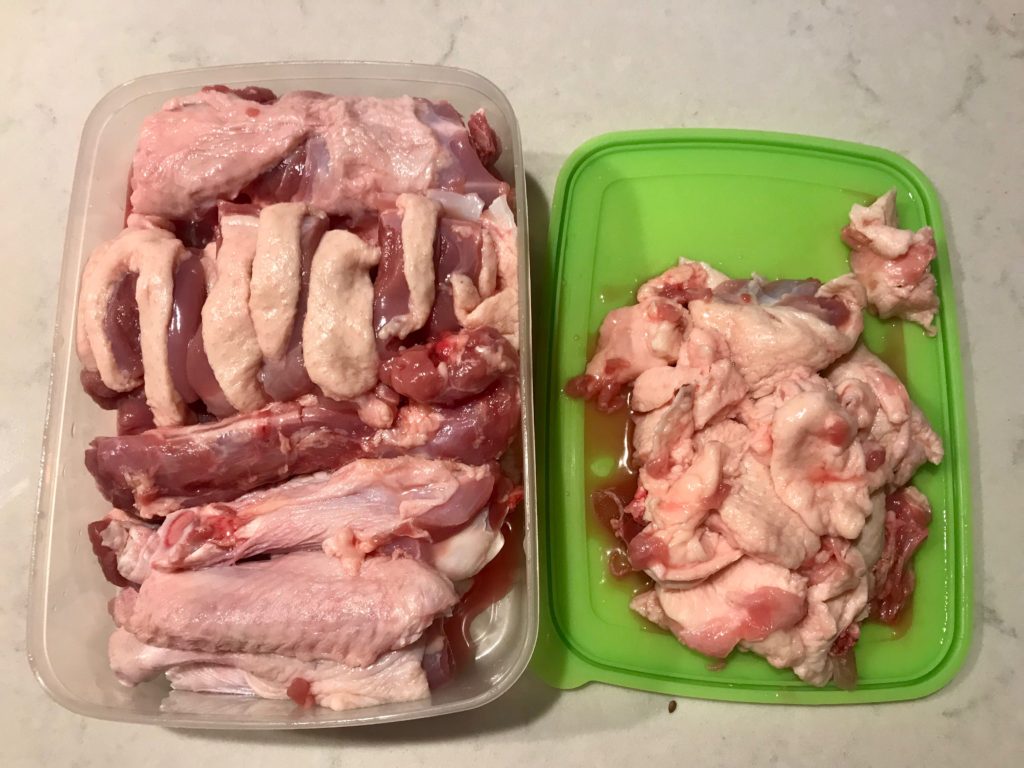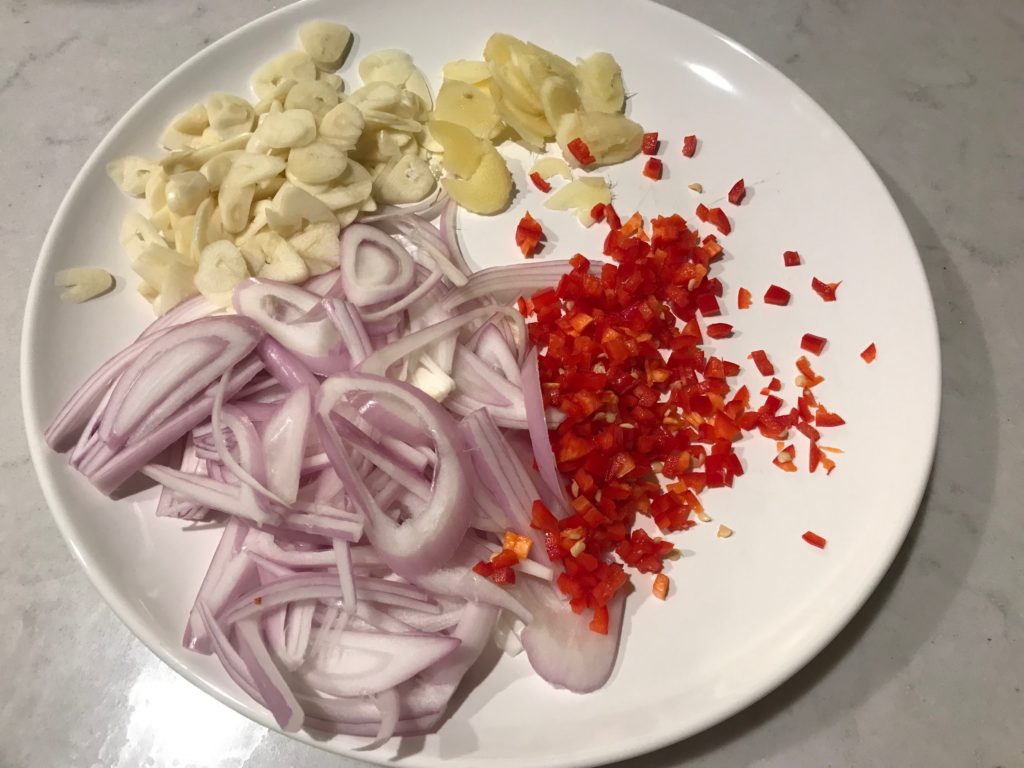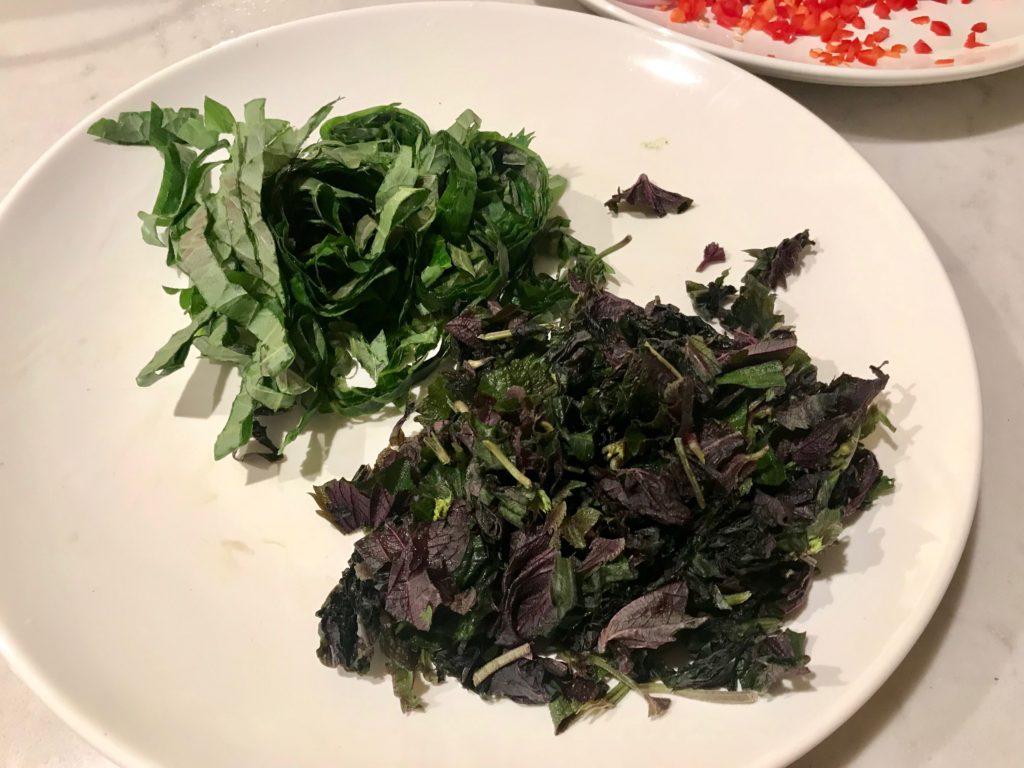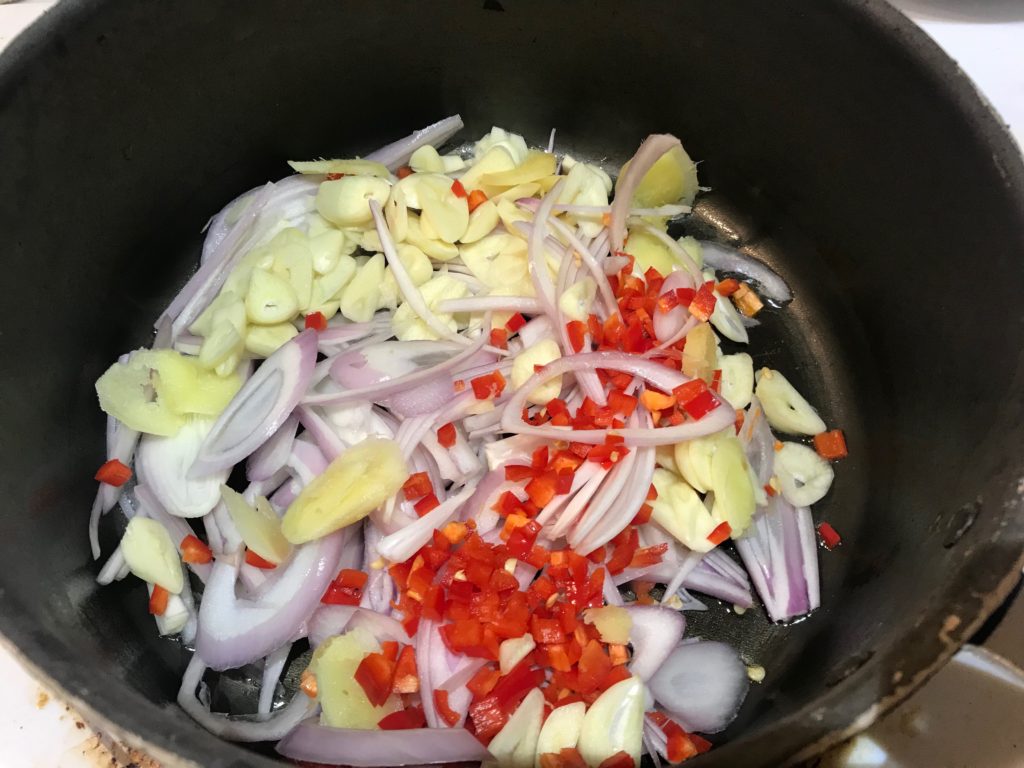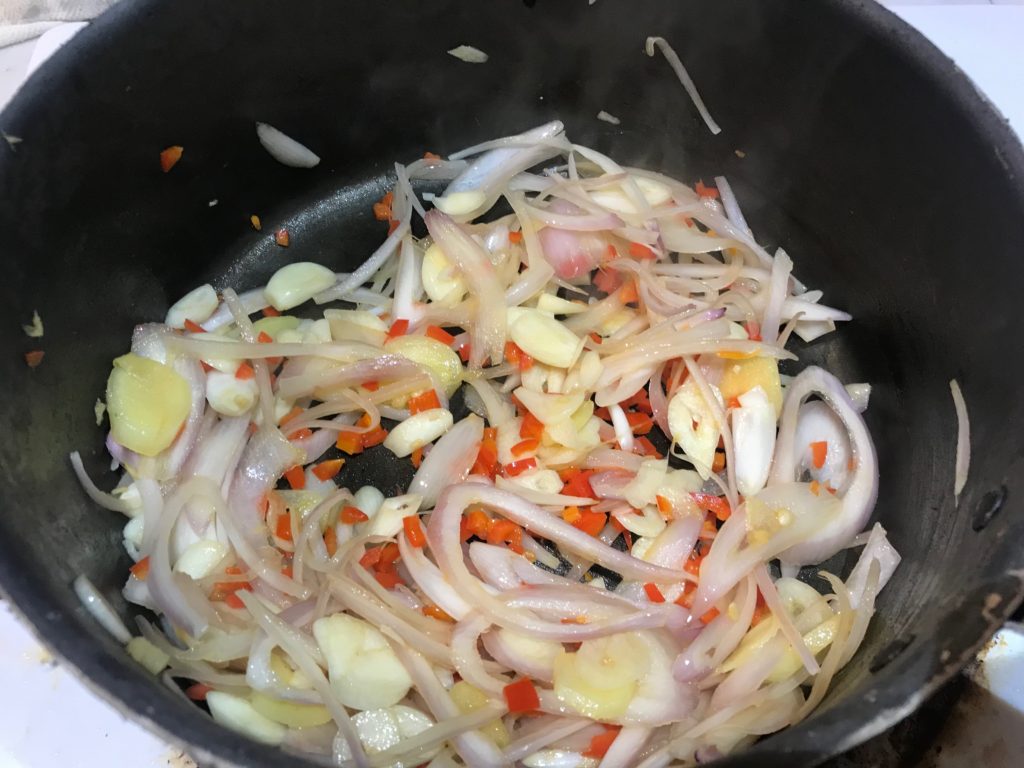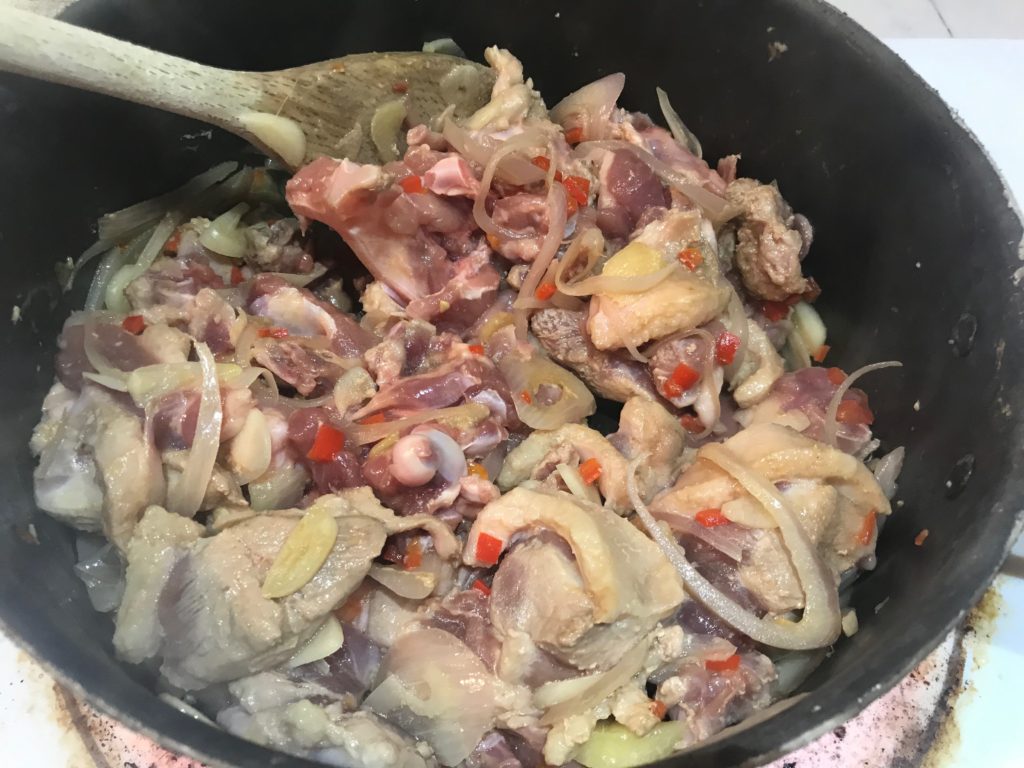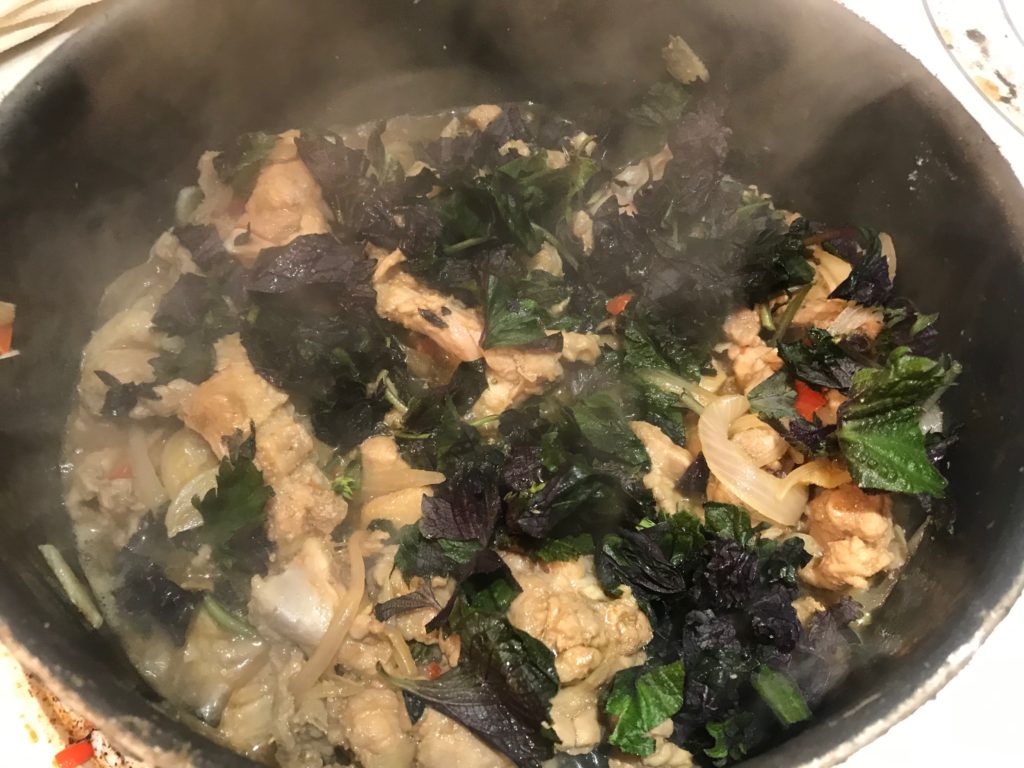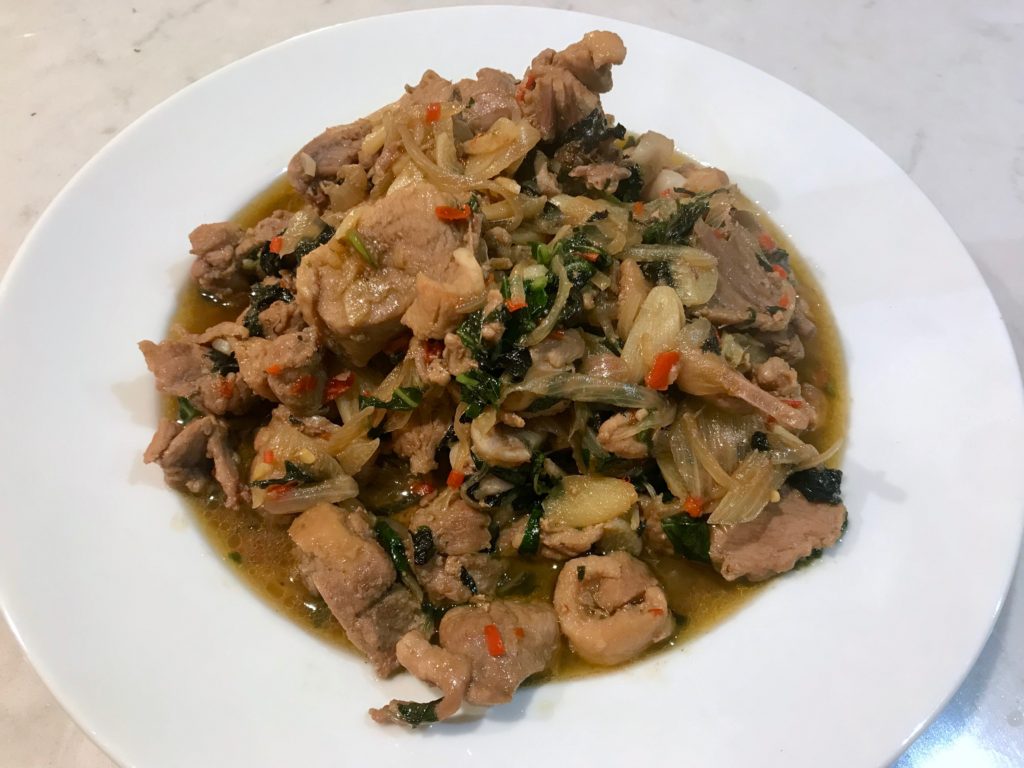I got a whole raw duck the first time and dissected it the first time. First duck recipe to share is Cantonese Shiso braised duck 粵菜 紫蘇燜鴨. In this dish, shiso leaves help get rid of the strong taste of duck and brings in extra flavor. Shiso leaves are also commonly used in stir-fry with snails, another common Cantonese street food appearing in alleyways in the snail season of late Summer and Fall.
I would also like to share a bit more about shiso leaves. Besides in Chinese foods, I also had sushi/sashimi with shiso leave, tempura shiso leave. Shiso leaves also seem to be used for drinks as well! Its versatility encouraged me to nerd it out and to figure out the differences, similarity between Chinese Zisu (紫蘇), Japanese shiso leaves (紫蘇/シソ) and Korean sesame leaves ggaetnip (깻잎) or soyeop (소엽). According to my eyes, Chinese Zisu is almost purple on both sides, Korean ggaetnip/soyeop is almost green on both sides, with slight shades of purple on the back of leaves; according to my taste buds, Chinese Zisu and Korean ggaetnip taste totally different both raw and cooked — Zisu has a strong, distinct flavor, ggaetnip/sesame leaves have mild flavor, slight bittersweet; according to Wikipedia, Chinese Zisu is the same as Japanese shiso leaves, the Chinese name “Zisu” 紫蘇 (purple perilla) is actually the origin of the Japanese name “Shiso”; according to other food blogger ChopstickChronicles.com, shiso leaves look similar as korean perilla leaves but taste different. “Shiso leaf is shaped like a spade with a serrated edge, whereas Korean perilla also known as sesame leaves is more flatter and have a less serrated edge“.
According to ChopstickChronicles.com, Shiso itself has green and red/purple shiso. Green Shiso is available all year round, main season is May to August in Japan; red/purple Shiso has more of an astringent taste, and mainly available between June and July.
Let’s get started to cook our duck with delicious shiso leaves!
QUICK TAKEAWAYS
- duck has strong taste, the more shiso leaves actually help clear that taste, don’t be shy in adding more shiso leaves!
- stir fry duck first (no oil needed as duck has a LOOOTTTT of fat from its skin) or stir fry spices/side ingredients first are both ok!
- amount used for rice wine, oyster sauce, soy sauces and sugar are not set. Please adjust as you try out the taste!! As I mentioned, duck has strong taste and need these sauces to help cover it.
RECIPE
- half duck sliced into pieces (debone duck instruction videos below)
- 1 whole garlic
- few slices of ginger
- 2 shallots
- 1 red pepper (optional)
- shiso leaves
- rice wine
- oyster sauce
- soy sauce
- traditional soy sauce
- sugar
Step 1: slice 1 whole garlic, or just peel or skin and smash it; slice ginger, slice 2 whole shallots or just peel them and cut in halves; slice or fine chop 1 red pepper if you want a spicy kick; slice shiso leaves.
Step 2: over medium-high heat, heat up oil, stir fry garlic, ginger, pepper, shallots till fragrance comes out, shallot becomes transparent and golden.
Step 3: add halve duck sliced pieces, Stir fry over high heat. Add 2-3 tbsp rice wine.
- Step 2 and 3 can be swapped. If fry duck first, then fry spices and add back duck, it will be less “saucey”.
Step 4: when duck is almost cook and no obvious red color, add 1 tbsp oyster sauce, 1-2 tbsp soy sauce, 1 tbsp traditional soy sauce, 1 tbsp sugar, 1/2 of shiso leaves. Add some water if too dry.
- some recipe adds a can of beer instead of water. I think this is for the mild taste beer like TsingTao beer 青島啤酒 from China. Strong taste beer like IPA is NO NO NO… it will be bitter..
Step 5: let it cook for 3-5mins (lid open if too much liquid, close lid if not much liquid), at the end, add the rest 1/2 shiso leaves.
Step 6: when the shiso leaves are also cooked (1min), remove from heat
READY TO SERVE! ENJOY!!
RESOURCES
debone-duck


